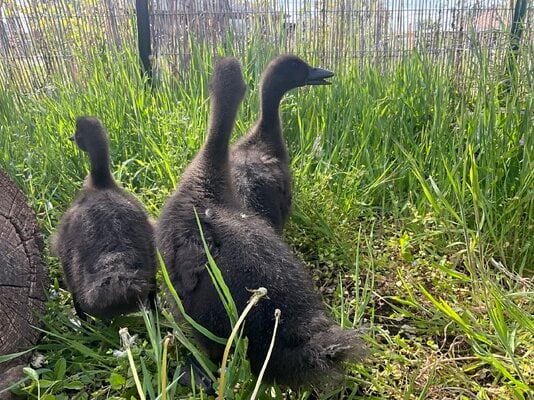DuckTapePalace
Chirping
- Apr 22, 2023
- 38
- 36
- 51
Our Ancona drakes have been really into our Black Swedish ladies…to the point that they will pursue them through the whole garden. It’s happened a few times that one of the ladies will be separated from the flock and I recently spied one who had been sitting alone for quite a long time and was stressed when I approached her (usually she is cool as a cucumber). We recently picked up 3 Cayuga’s hoping to make more black ducks available but were also kind of hoping for a drake so they might feel safe. Now at about 3 weeks, based on the shapes of their tails and their size, it’s looking like we ended up with 2 drakes and not one. Yikes! Already our ratio didn’t seem quite big enough but now it will be skewed more. I would hate to have to find something else to do with any of our boys but that’s what we’re looking at.
At this point, would it be wise to pick up more ducklings, hoping they’re all ladies? I saw that 4/drake is ideal and even if we only have 2 we would only have 6. It hasn’t been a problem except for the issue of separating the twins which I don’t like for safety reasons.
Any thoughts or suggestions? I don’t know if I can have new babies in with 3 week old ducks. We really weren’t trying to grow our flock by too much.
Maybe not the most clear shots of their tails but this is from just before more of their feathers have started coming in. The smallest one has the broad tail and the other two are larger with a more pointed tail.
At this point, would it be wise to pick up more ducklings, hoping they’re all ladies? I saw that 4/drake is ideal and even if we only have 2 we would only have 6. It hasn’t been a problem except for the issue of separating the twins which I don’t like for safety reasons.
Any thoughts or suggestions? I don’t know if I can have new babies in with 3 week old ducks. We really weren’t trying to grow our flock by too much.
Maybe not the most clear shots of their tails but this is from just before more of their feathers have started coming in. The smallest one has the broad tail and the other two are larger with a more pointed tail.








